Since people first found this distinct little fruit, there has been no end to the massive number of different types of tomato trees grown out there.
Tomatoes aren’t a single species of plant; instead, their many varieties include everything from cherry tomatoes to spaghetti sauce-filling monsters known as beefsteaks. Each variety is identified by its shape and size, among other characteristics.
If you’re buying seeds or plants for your garden, it can be difficult to know which type best suits your needs.
That’s what this list is for, to help you find the best tomato plants and trees that you can grow in your plot or garden right now!
1. Brandywine
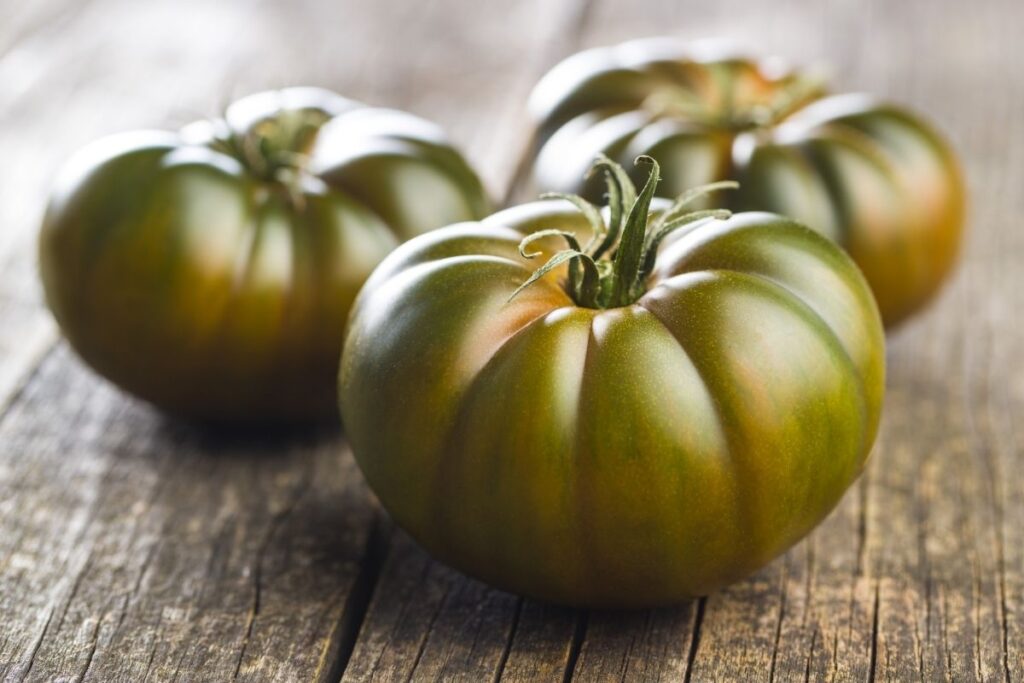
Brandywine tomatoes are one of the most popular varieties of tomatoes grown in North America. As an indeterminate type of tomato, the plant these grow on can often reach medium-sized tree heights, up to, and, even sometimes over, 10 feet tall!
They are what is known as an heirloom cultivar, which means it is a variety of tomato that has likely been grown for hundreds of years, certainly since before widespread agricultural technique allowed for larger-scale farming. They are so old that we don’t know where this cultivar comes from exactly!
These tomatoes are large, round, and sweet. They grow well in cool climates and are resistant to diseases such as bacterial wilt.
These tomatoes are available year-round, which is why, in the United States, many grocery stores sell them no matter the season. However, in the northern part of Canada, where winters are colder than those in the southern parts of North America, they tend to perish.
Most people think that they taste better than regular tomatoes. They are certainly widely considered to be a very sweet type of tomato, so if you have a sweet tooth, you’re sure to enjoy them!
Many people consider them to be easier to eat than regular tomatoes. But the size makes them difficult to cut up. They are usually sold whole or halved. They also tend to spoil quite quickly, meaning they’re not ideal for long-distance travel and transport.
2. Amish Paste
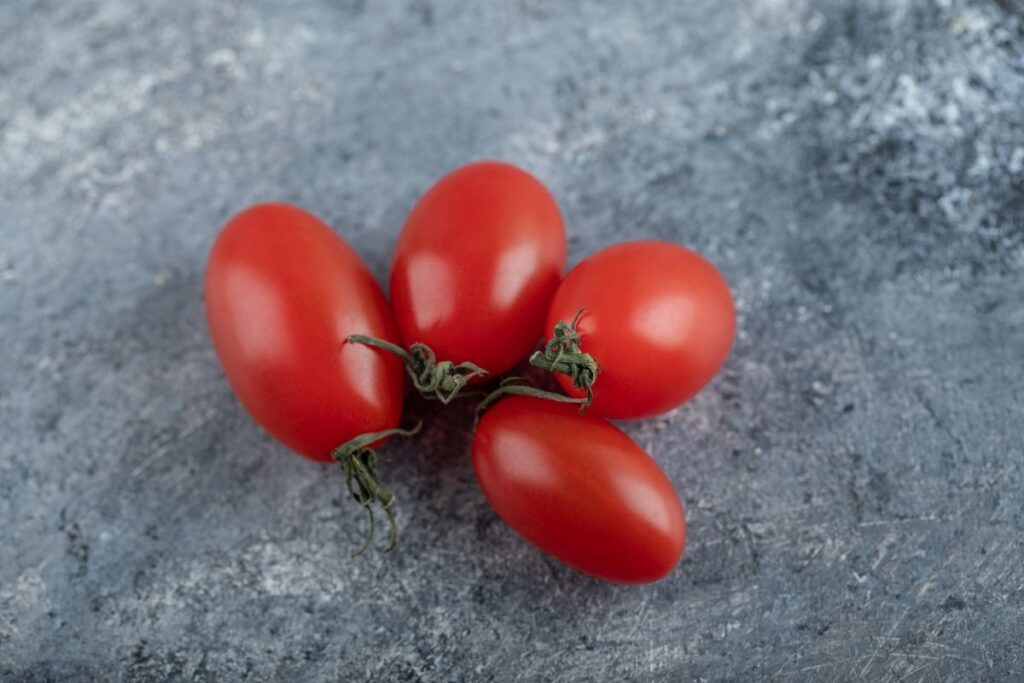
Not much is known about the origins of Amish paste tomatoes, with them being heirloom tomatoes. However, the tomato was likely categorized and grown on a larger scale by Amish farmers in Pennsylvania and Wisconsin.
What we do know is that they were made famous by Tom Hauch, who added the seed of this plant to his Heirloom Seeds Organization
Amish paste tomatoes are a unique tomato variety grown on farms in Lancaster County, Pennsylvania. They are known for their size, flavor, and texture.
These tomatoes grow large and firm, much larger than regular tomatoes. They do not have seeds, and the taste is sweet and juicy.
They are traditionally used in soups, stews, sauces, and salads. Amish paste tomatoes are available fresh, canned, frozen, and dehydrated. They are available year-round.
These tomatoes require no chemicals or pesticides. Instead, they are fertilized naturally with manure and composted cow dung. Farmers must use care when harvesting them.
The fruit should be picked when fully mature, and then allowed to ripen off the vine. Harvesting too early results in smaller, soft fruit.
3. Santorange
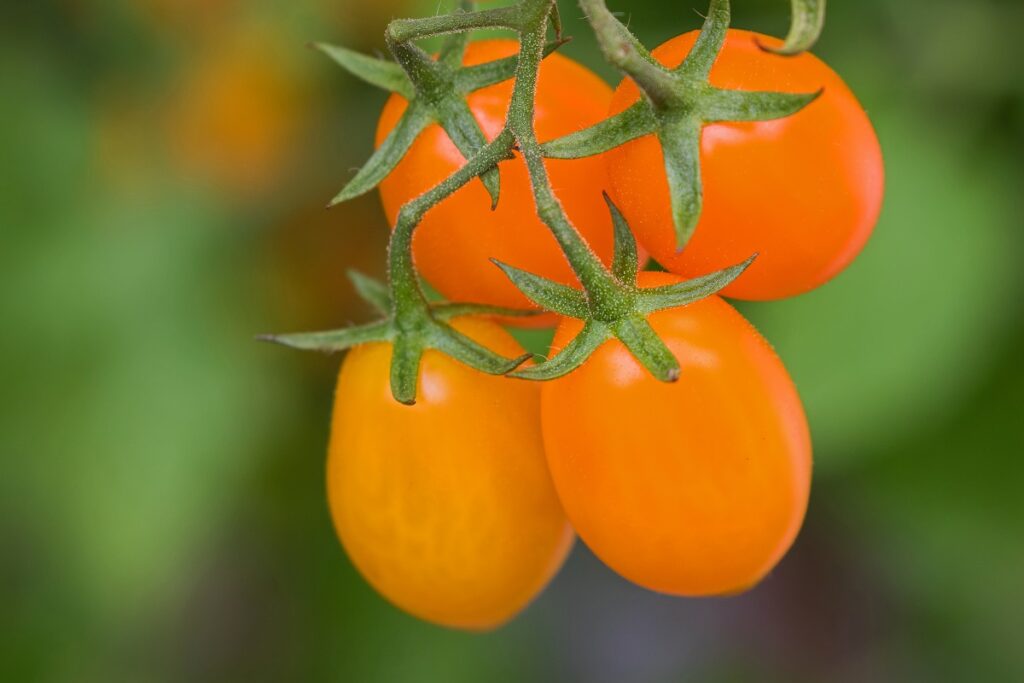
Santorange tomatoes are small, oval-shaped tomatoes that grow well in containers.
They look very similar to cherry tomatoes or salad tomatoes, though they are usually slightly larger than either type and tend to have a slight orange or yellowish hue to their skin.
Santorange tomatoes are available year-round but have a short season where they grow best. They do not store well.
They are sometimes confused with cherry tomatoes because of their shape, but they are two distinct types of tomatoes. The name may have been derived from the Spanish word for “little orange.”
Santorange tomato seeds germinate quickly and seedlings are tolerant of poor soils. Santorange tomatoes can be grown indoors in greenhouses or pots. They should be planted in a sunny location during the spring.
4. Juliet
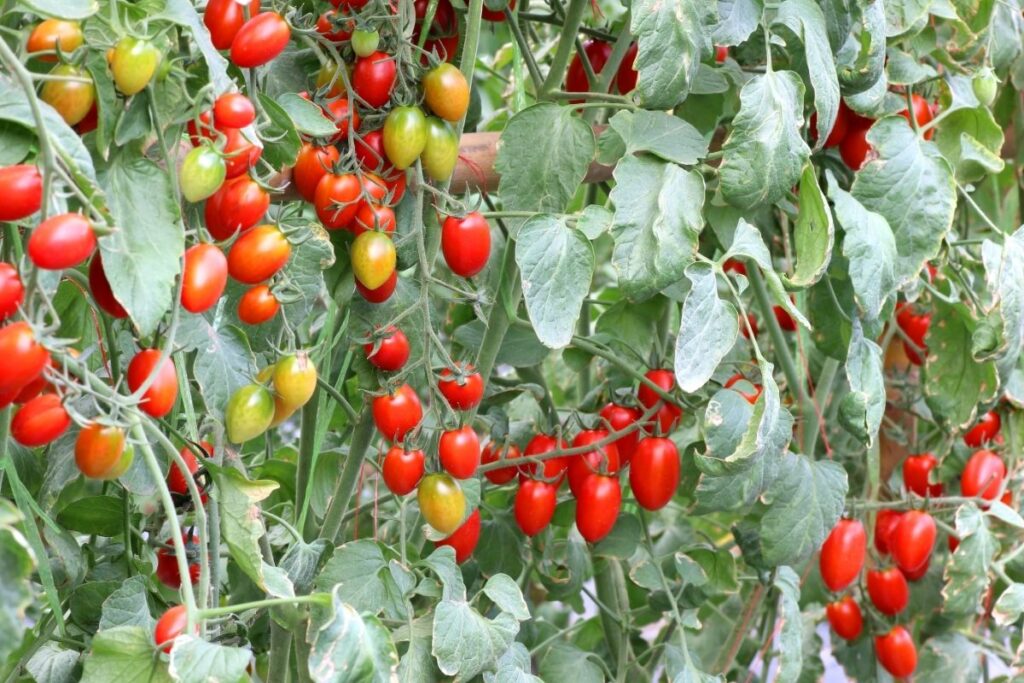
For a more recent variety of tomatoes that have only been introduced to wider markets in the last few decades, there’s the Juliet tomato. Introduced only in the 1990s, Juliet tomatoes are available year-round thanks to their hardy disposition, although they are often grown in greenhouses.
Juliet tomatoes grow well in cooler climates and produce fruit earlier than many other types of tomatoes. They do require some care, though, such as regular fertilization and pest control.
Juliet tomatoes should be stored at room temperature, away from direct sunlight, and away from high humidity. If you live in a humid climate, it may be necessary to store them in the refrigerator.
5. Black Cherry
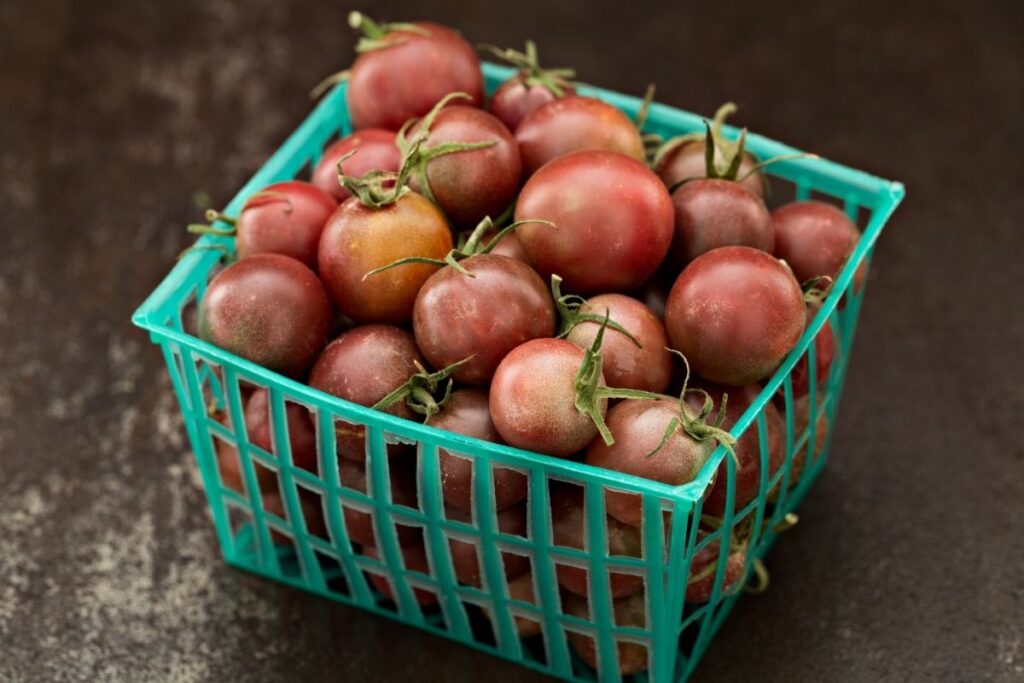
One of the most distinct-looking tomato varieties, black cherry tomatoes have a unique dark-purple coloring that is unlike pretty much any other kind of tomato out there.
What makes black cherry tomatoes stand out among other varieties of tomatoes? Well, besides their delicious flavor, and deep coloring, these little gems pack a nutritional punch.
For example, they contain more lycopene than any other tomato variety. Lycopene is a powerful antioxidant that helps protect against certain cancers. And black cherry tomatoes are loaded with vitamin C and potassium.
They’re also rich in fiber, folate, magnesium, phosphorus, zinc, copper, manganese, niacin, riboflavin, thiamine, pantothenic acid, and vitamins A and B6.
These black cherry tomatoes do not taste the same as regular cherry tomatoes. They are smaller and firmer overall. However, they are still delicious. They are available all year round at most grocery stores.
RELATED: What Is Eating Holes in Your Tomatoes? | Causes and Solutions
6. Green Zebra
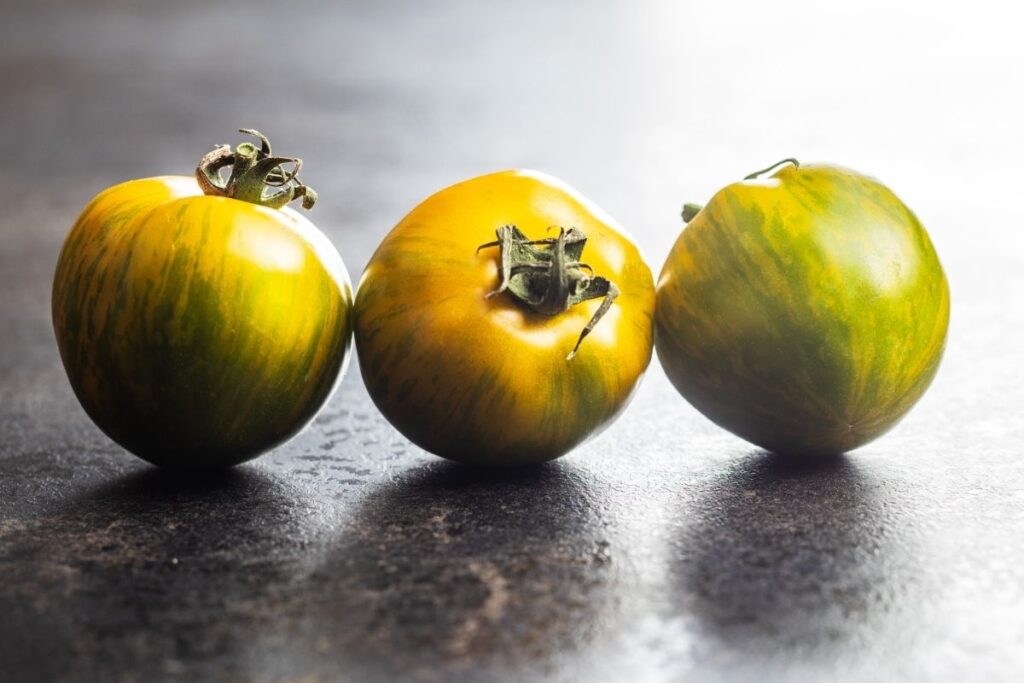
As their name would imply, green zebras have a unique look to them that sets them apart from other tomatoes.
Rather than being a single strong color across the entire skin, they have a distinct green color, with a striped yellowish to orange pattern running down the fruit.
Green Zebra tomatoes are highly nutritious and require little care. They grow well in containers and the ground. They are resistant to drought and freezing temperatures.
Green Zebra plants produce large fruits that ripen quickly after pollination. The fruits are rich in vitamin C and contain no oxalate. They are suitable for home use and commercial production.
7. Black Krim
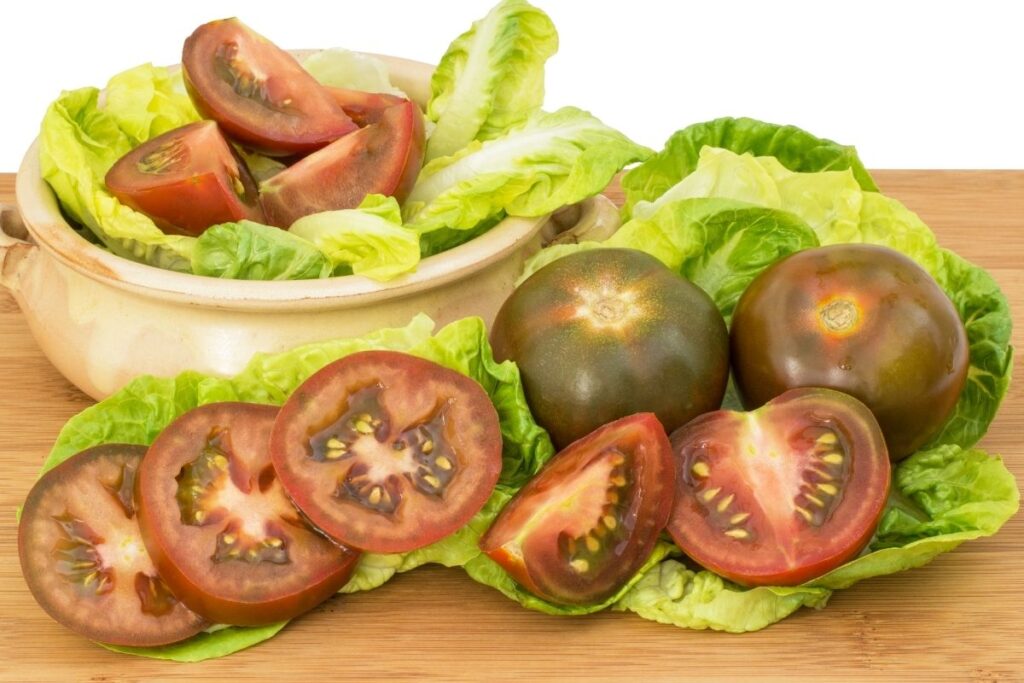
For another beefsteak variety of tomato, we look at the Black Krim cultivar. Known best for their large, bulbous shape, their deep maroon color, and a rich taste, they’re a delight on any dinner plate!
Black Krim tomatoes are available in most grocery stores that specialize in providing a variety of tomato types in stock. They are small, round red tomatoes with thick skin.
The flesh is deep red and juicy. They are usually sold canned or frozen.
Krim tomatoes are delicious when eaten plain, used in salads, added to pasta dishes, or even made into tomato sauce, giving whatever recipe they are added to a surprisingly tangy flavor.
8. Early Girl
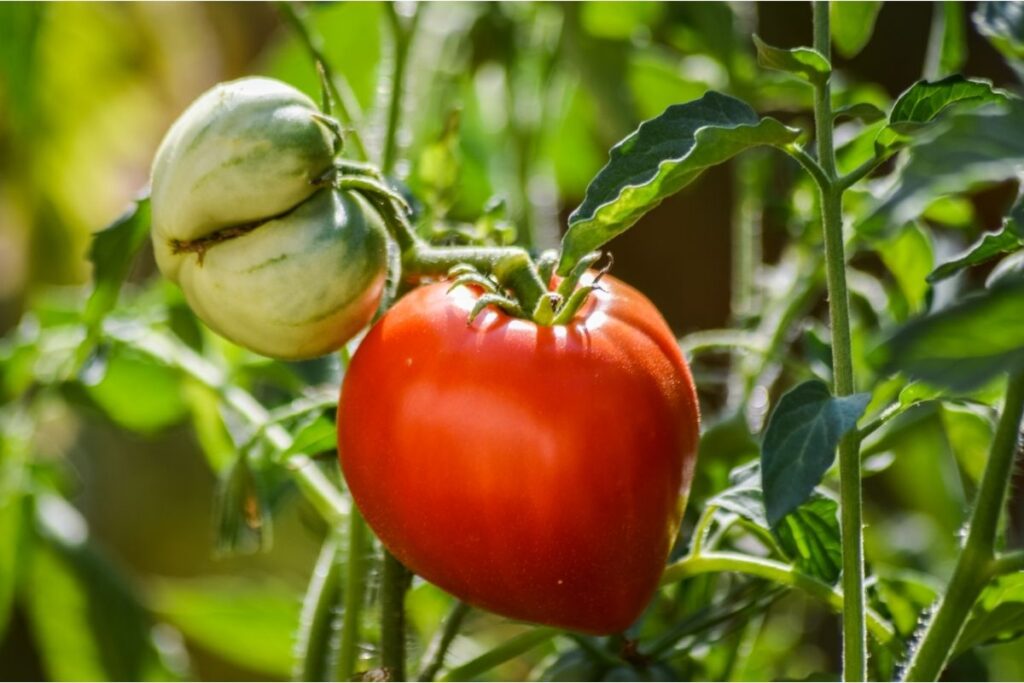
A very popular variety of tomatoes for home gardens, early girls are a very widely grown cultivar for people who are just starting in their home-gardening journey.
They have a short seasonal cycle when compared to other tomatoes, and grow quite tall for tomato plants. Heights of over 9 feet aren’t unheard of.
Early Girl tomatoes are a hybrid tomato developed by the University of California, Davis. The plants produce large fruit with thick skin and firm flesh.
They ripen relatively quickly, typically in 50 days after planting. This makes them ideal for growing in northern or in drier climates.
They are a good choice for home gardens because they don’t require much space. Most varieties grow well in containers, too. They are also good choices for commercial growers because they are easily transplanted.
9. Azoychka
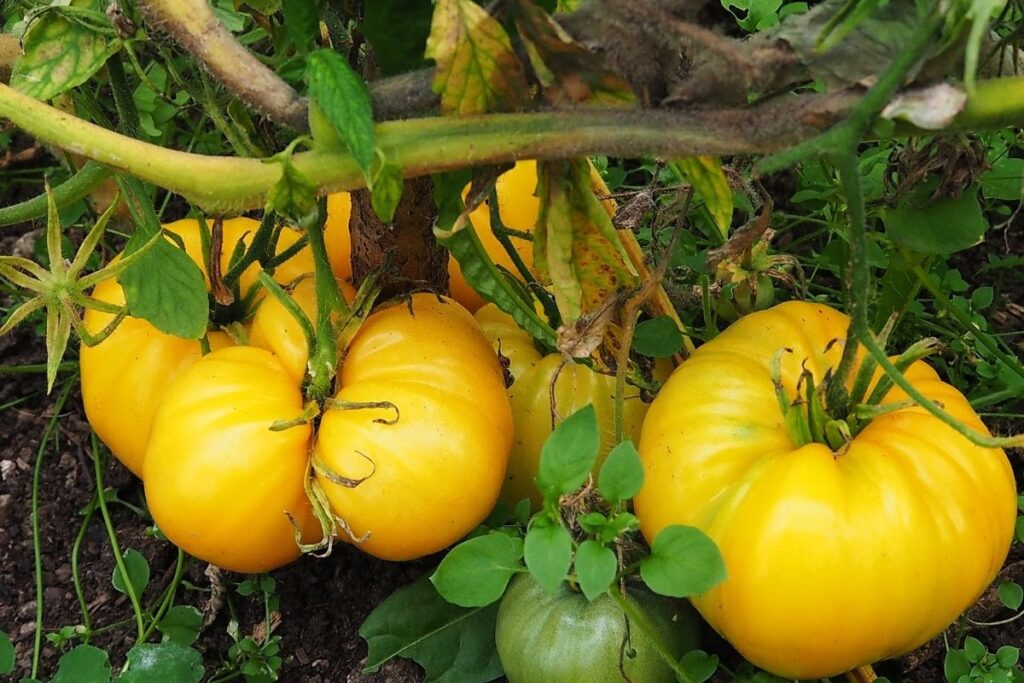
Another unique type of tomato, the Azoychka tomato variant is widely known for its flattened shape and bright yellow color when it is ready for picking.
Azoychka is a popular variety of tomato. The name comes from the Russian word “azoy” meaning “healthy”. Azoychkas are known for their excellent flavor and firm texture.
They do well in most weather climates, although they do prefer warmer temperatures for the best results.
They are usually picked green and ripened indoors. Some growers pick them unripe and then mature them under glass. These tomatoes are available all year round, although they are most common in spring and summer.
10. Aunt Ruby
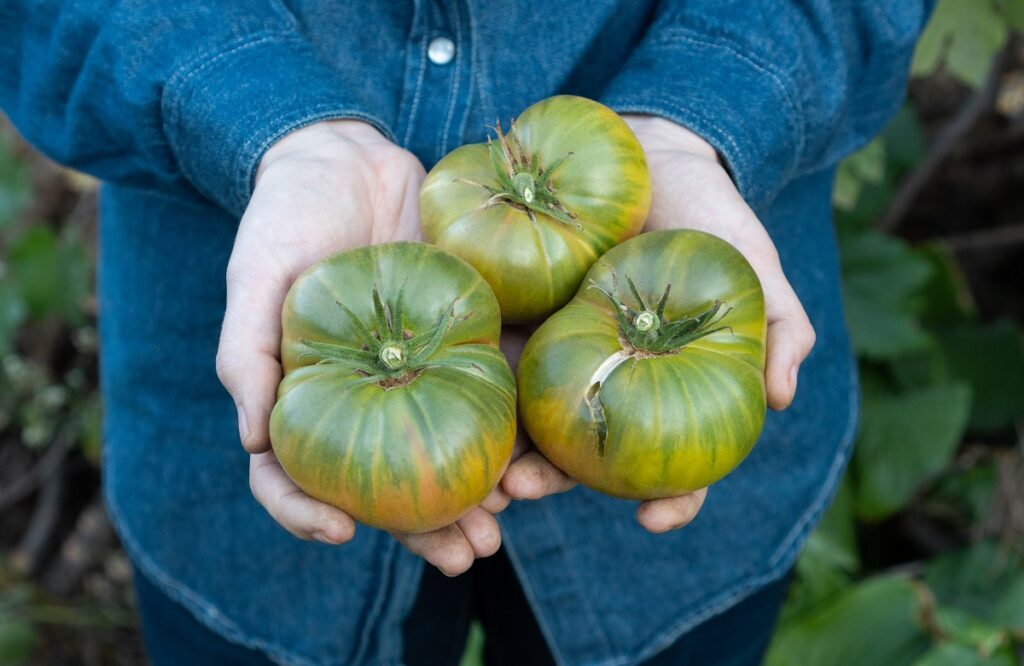
For a unique heirloom tomato that has rapidly been growing in popularity among home gardeners, we have the Aunt Ruby green tomato.
Although the variety has been grown in Germany for centuries, it started to be cultivated into the tomato we know today by the woman whose name would become synonymous with this cultivar, Ruby Arnold.
Her family would refer to the tomatoes she grew as ‘Aunt Ruby’s tomatoes’, and the rest is history!
Most plants and small trees of this variety are grown from seeds, as cuttings are extremely hard to find. Grow them from seeds in a greenhouse where they can germinate properly. You’ll be able to transplant the seedling into soil with plenty of sunlight after any frosts have passed.
RELATED: Vegetable Tomato Leaf Curl Virus: What Are the Causes & How to Fix Them?
11. Dixie Golden
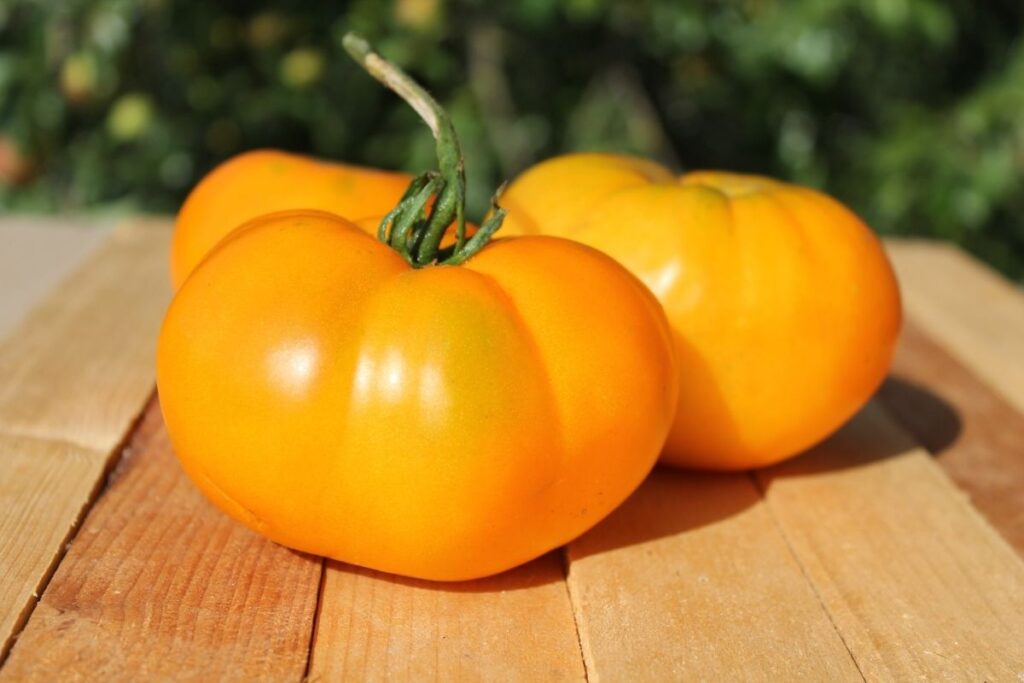
For a bright and big tomato variety, dixie golden is one of the most popular types in the United States. First recognized in the 1930s, Dixie Goldens have been grown by Amish farmers for decades.
Perhaps due to their roots in smaller Amish communities, they are often grown without any chemicals or pesticides. The plants are started indoors and then transplanted outdoors after the last frost.
This method produces fruit in usually 85 to 100 days, although it is possible to grow fruit in as little as 60 days in some cases.
Dixie Golden Tomatoes grow well in USDA Zone 7b and warmer climates. These tomatoes are easy to grow and require no major soil amendments unless the soil has been contaminated with some stronger chemicals or other pollutants.
Dixie Golden Tomato plants produce large, heavy fruits that ripen quickly.
Editor’s Recommendation
All Caged Up: How to Use a Tomato Cage
Vegetables That Start With I: More Than You Think
A Touch Of Frost: 14 Different Types Of Snow Trees
Conclusion
These are just some massive variety of tomatoes you can find out there.
But we hope we have given you enough information about different types of tomatoes, so you can make a better decision when deciding which one to buy or grow next time.







